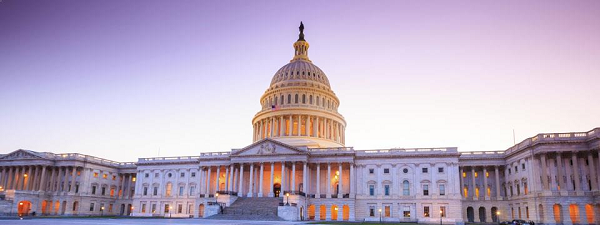Part of the Diversity, Equity, and Inclusion blog post series.
“Native American Heritage Month occurs in the U.S. annually every November since President George H.W. Bush designated this month in honor of Native American Heritage on August 3, 1990. During National Native American Heritage Month, we celebrate the countless contributions of Native peoples past and present, honor the influence they have had on the advancement of our Nation, and recommit ourselves to upholding trust and treaty responsibilities, strengthening Tribal sovereignty, and advancing Tribal self-determination.”
Even though as immigration attorneys we focus on so many diverse groups, to many of us, myself included, the group that has been present in America the longest tends to be the biggest mystery and sadly, many times forgotten. It’s a demographic that seems to be seldom addressed and I can’t recall seeing this addressed in any Diversity, Equity and Inclusion (DEI) programs I so often attend and support. For some reason, it seems that the information about Native American tribes is either not presented or simply overlooked. Is this because this area is unknown to so many? Or just not as mainstream as other topics in the DEI space? Whether unknown or not, it’s not acceptable.
This leads me to ask, as a group, what can AILA members do to help correct this?
I call on all AILA members to fulfill the request of the President in his October 29 proclamation where he urges all Americans to observe this month, and to celebrate November 26, 2021, as Native American Heritage Day. We should each make an effort to attend a least one related program, ceremony or activity. We should take the time to learn more, not only to support Native American Heritage, but to enrich our own cultural awareness of Native Americans whose history is more established in America than any other.
There is so much we can do to learn about Native American Heritage. For example, visit a Native American museum, learn about a local tribe, research programming and activities in your local area, read books, look online. Any of these activities will help preserve the history and culture of Native Americans and then you should share your experiences and knowledge with others. By doing this, we can do our part to help lift up Native American culture and bring it to the forefront and mainstream.
 We recently set aside time on our vacation to Sedona, Arizona to learn more about the local Native American groups in Arizona. We chose to go to Montezuma Castle National Monument, built by the Sinagua’s in 1050 AD which is the country’s third National Monument dedicated to preserving Native American culture. Located in the Verde Valley in Arizona and built high up into a cliff, we came away inspired and in awe. The planning, innovation and the determination it must have taken, as well as commitment to build such a structure that began 90 feet up in the side of a limestone cliff, consisting of five stories on top of that, with twenty rooms for the inhabitants, left me speechless. I reflected and wondered about the resilience as well as the sheer courage it must have taken to build such a structure over a 200 year span.
We recently set aside time on our vacation to Sedona, Arizona to learn more about the local Native American groups in Arizona. We chose to go to Montezuma Castle National Monument, built by the Sinagua’s in 1050 AD which is the country’s third National Monument dedicated to preserving Native American culture. Located in the Verde Valley in Arizona and built high up into a cliff, we came away inspired and in awe. The planning, innovation and the determination it must have taken, as well as commitment to build such a structure that began 90 feet up in the side of a limestone cliff, consisting of five stories on top of that, with twenty rooms for the inhabitants, left me speechless. I reflected and wondered about the resilience as well as the sheer courage it must have taken to build such a structure over a 200 year span.
From there, it led me to ask more questions, engage with the guides onsite and question what happened to this tribe? Where are they now and why don’t we know exactly what the purpose of this structure was that was built so high up on a cliff? These questions opened other doors that led us to learn about other tribes while on our trip. We learned it is believed by some Hopi, another local tribe in Arizona, that the Sinagua are their ancestors. Also, the Yavapai and Apache tribes believe the Sinagua integrated with their present day tribes and exist today. All four tribes, Zuni, Yavapai, Apache and Hopi are associated with the present day site.
 Our curiosity continued days later into our trip as our experience at this beautiful monument stayed with us. We made a point of seeking out and visiting local area stores specializing in hand made Native American arts and crafts. We learned about and purchased crafts from the Hopi, Zuni and Santo Domingo tribes. By doing so, we not only came back with beautiful souvenirs we will cherish for the rest of our lives, but we also helped support Native Americans. We will display their artwork in our everyday lives and try to live up to the purpose of the Native American Heritage month in honoring the Native American people, preserving their rich culture and traditions, and spreading the knowledge we gained.
Our curiosity continued days later into our trip as our experience at this beautiful monument stayed with us. We made a point of seeking out and visiting local area stores specializing in hand made Native American arts and crafts. We learned about and purchased crafts from the Hopi, Zuni and Santo Domingo tribes. By doing so, we not only came back with beautiful souvenirs we will cherish for the rest of our lives, but we also helped support Native Americans. We will display their artwork in our everyday lives and try to live up to the purpose of the Native American Heritage month in honoring the Native American people, preserving their rich culture and traditions, and spreading the knowledge we gained.
What will you do this month to help protect and preserve this important culture? Whatever it is, I hope it sparks your curiosity like ours was sparked – to ask questions, to go further and to learn more about Native American Heritage.








